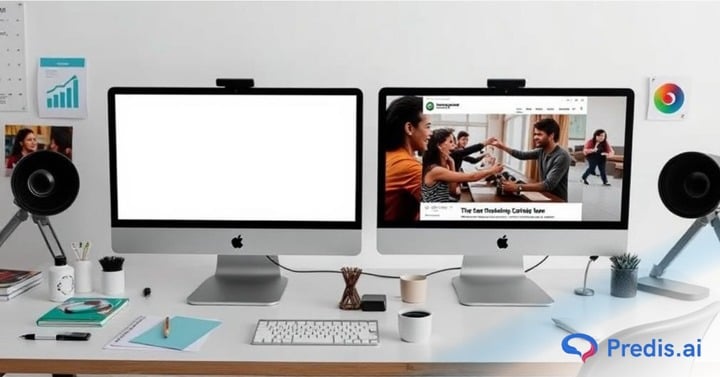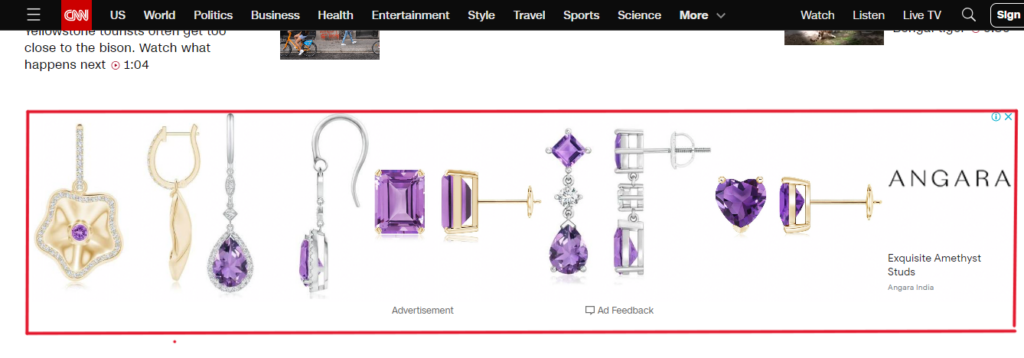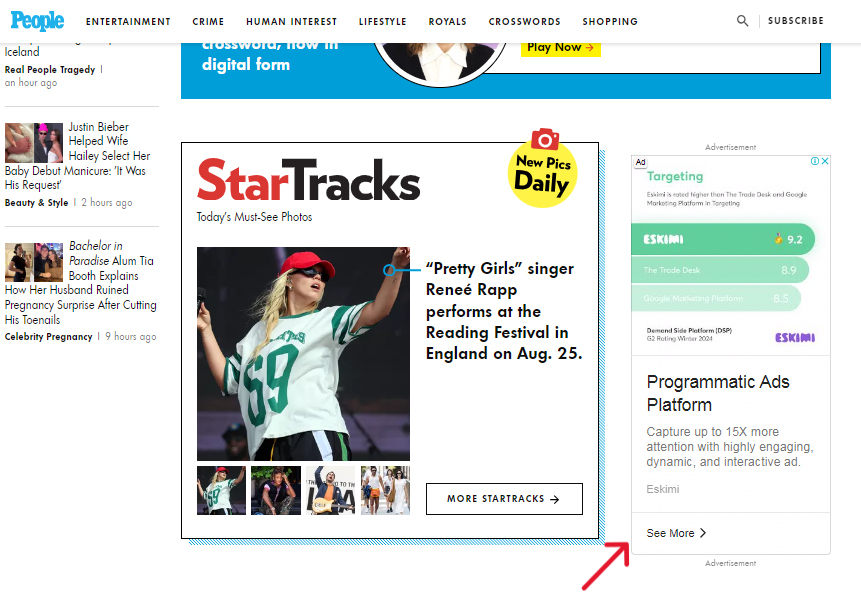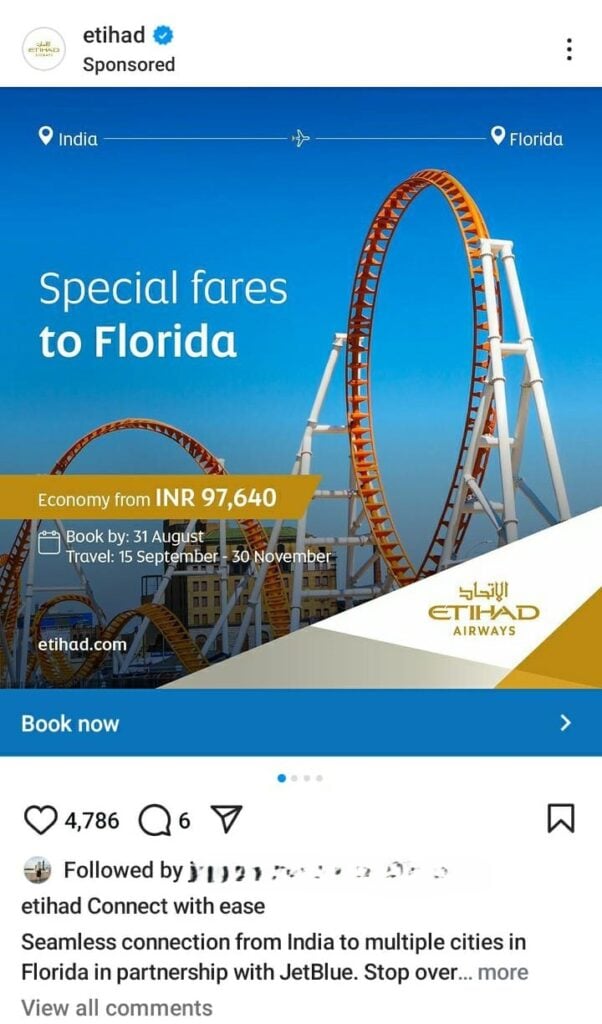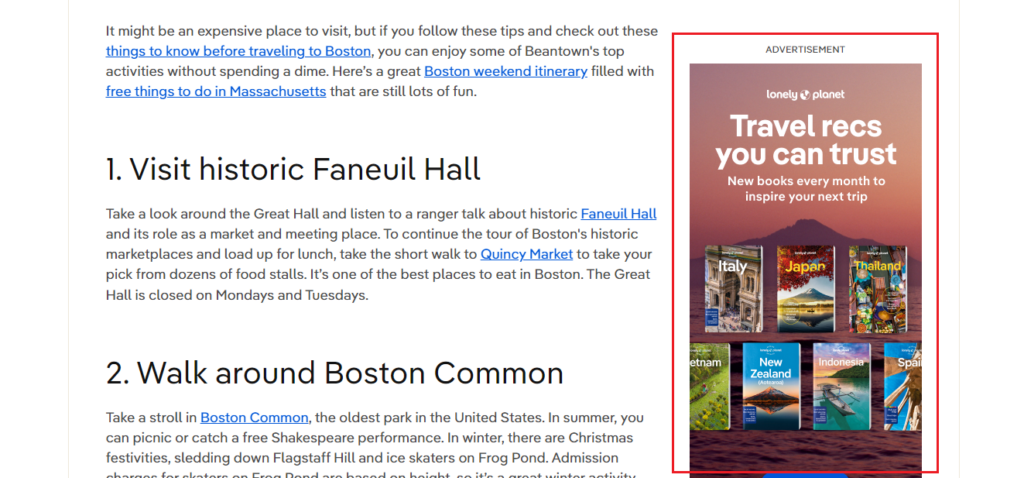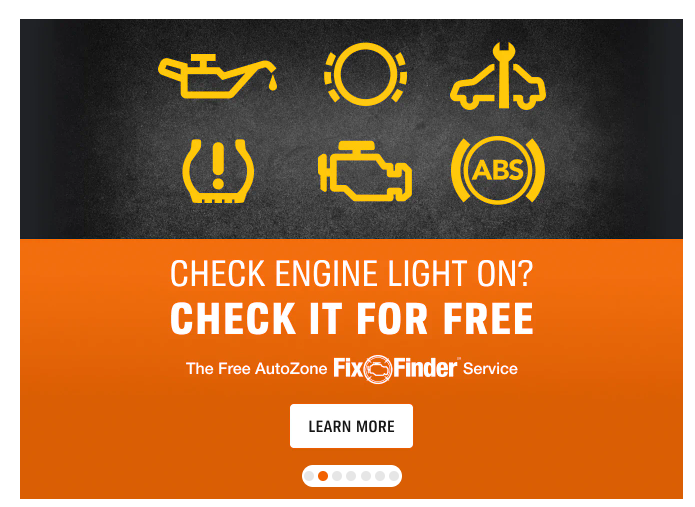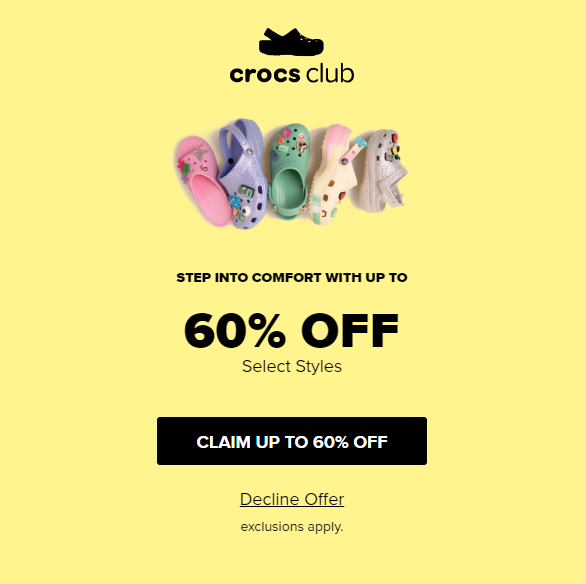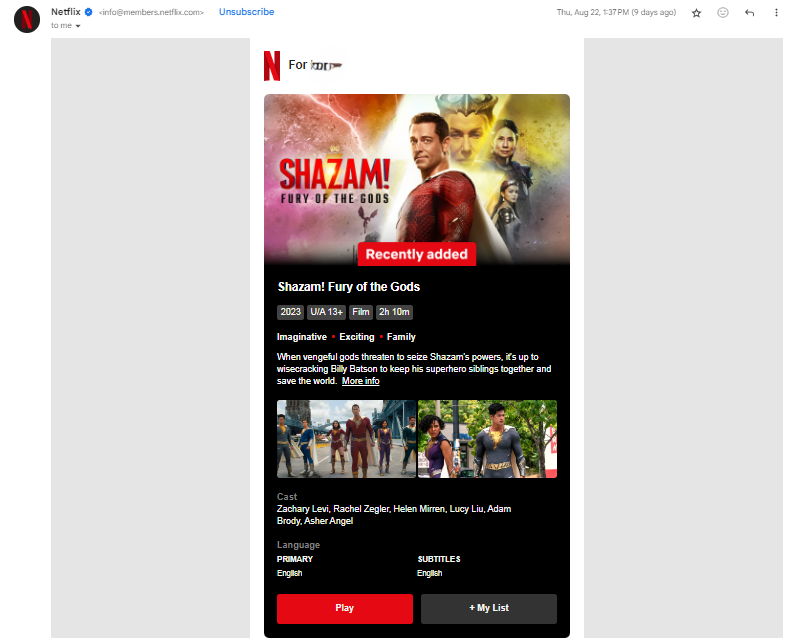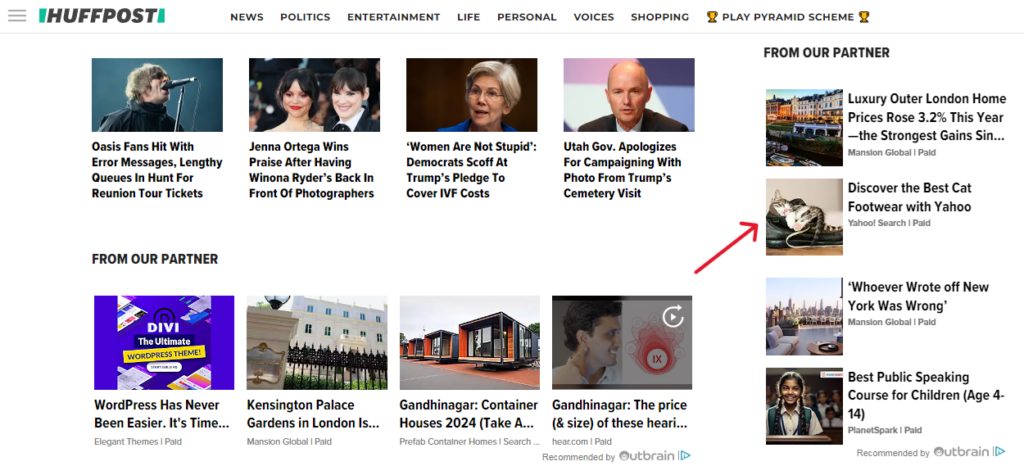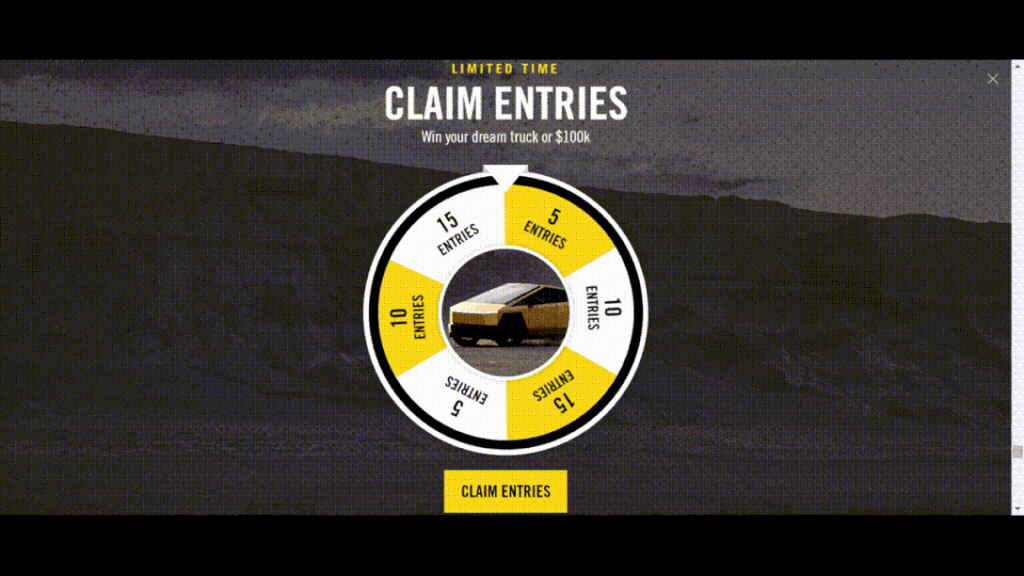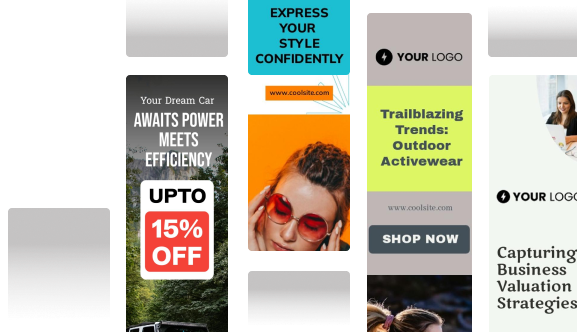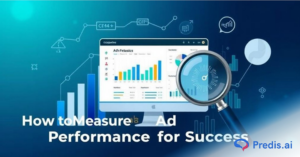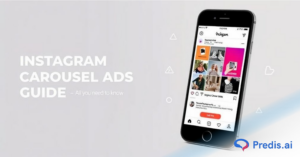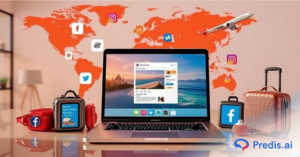Banner ads work like magic and have the power to reach a wider audience. You can lure prospective audiences to click on the banner ads with creativity and persuasive copywriting. But here’s a small catch!
Knowing when to use static and dynamic banner ads is key to grabbing attention and making customers click on your ads.
While the debate about static vs dynamic banner ads is never-ending, many forget they are two sides of the same coin. This blog will provide you with a comprehensive and objective perspective on which banner ad is best for your business requirements.
So, let’s get the ball rolling, but before that, let’s look at banner ads to understand what they do clearly.
What are Banner Ads?
Banner ads are digital advertisements on a website to pull web traffic and effectively promote a brand. The ads are linked to the advertisers’ website, where users are encouraged to take action with appealing call-to-actions (CTAs), such as signing up for an event or purchasing a product.
On any ad-supported website, you may find rectangular pieces of graphics stretching across:
- Top of a web page
- Below the website header
- The right-hand sidebar
- Interspersed within the primary content
- Bottom of the browser window
This is what a banner ad would look like:
Now that we have your basics, let’s move forward. Let’s explore the significant types of banner ads to get a clear perspective on static vs dynamic banner ads.
Static vs Banner Ads: Two Ends of the Same Spectrum
Banner ads are classified into two broad categories: static and dynamic. Keep reading for a detailed explanation of the different types of ads and how they can benefit from them:
1. Static Ads: Timeless and Reliable
As the name suggests, static banner ads don’t contain animated or interactive graphic elements. With basic graphics and a call to action, these banners are perfect for marketers seeking to create consistent branding.
Static banner ads are fairly easy to create, compatible with most ad networks, and can be displayed on mobile or desktop apps.
However, as the digital landscape evolves, static ads may only sometimes yield the desired CTR or engagement levels. A static banner looks something like this:
Where Can You Use Static Banner Ads?
While there are no limitations on where and when to use static banner ads, they are excellent for generic offers like discounts. Here are some common static advertisements that you see online:
1. Social Media
Social media advertising revenue will grow to USD 255 billion by 2028. Leveraging social media platforms for static banner ads can help you amplify your brand story and attract interested customers.
Static banner ads are visually appealing and easy to consume, allowing users to glance at them quickly while scrolling their feeds.
Pro-Tip: Consider varying image resolutions and text restrictions to optimize the ads.
Social media static ads look something like this:
2. Online Portals
Popular online portals, such as news sites, entertainment hubs, or e-commerce platforms, attract many visitors. Therefore, static banner ads on these portals can significantly increase brand visibility and awareness.
For example, this Lonely Planet ad placed on travel recommendations can garner attention from a targeted audience.
3. Newsletters
Are you a small business owner looking for cost-effective ways to boost your brand’s visibility? If yes, include static banner ads in the promotional emails or newsletters to advertise a new product, service, or event.
Take this Grammarly newsletter, for example. It promotes the new AI feature that makes writing faster and more effective.
Top Strategies to Create Click-worthy Static Banner Ads
1. Align with Your Brand’s Theme
Getting creative is great, but remember to avoid going overboard and creating something that doesn’t resonate with your brand’s core ethos. Ensure the color palette and themes align with your brand story.
2. Use High-Definition and Eye-Catching Images
High-definition and visually appealing images make your banner ad stand out, luring potential audiences. Use vivid colors and beautiful settings to create the desired impact.
Tools like Predis.ai offer an intensive image library and templates to create banners that give your brand an edge.
Take this banner ad by The North Face, which has a clear, high-resolution image in the background. This positively impacts visitors, motivating them to scroll down the page and explore the store.
3. Use Concise Call to Action (CTA)
An effective banner will take viewers exactly where they want to go with a concise and clear call to action (CTA). To increase the CTR, add an enticing and clear CTA button. You can make the CTA stand out with persuasive copywriting and a bold color scheme.
4. Simplicity is Key
Viewers browsing through the web glance at things only for a few seconds. You have a small window to make an unforgettable impact. So, keep it simple—avoid using complicated graphics and hard-to-understand vocabulary. The simpler your message, the more it will resonate with the target audience.
For example, let’s dissect this AutoZone banner ad:
- Consistent with the brand theme
- Clear CTA
- Careful choice of words
- Bold and attractive color palette
5. Pick Your Fonts Carefully
One of the most common mistakes brands make is choosing hard-to-read fonts. To avoid cursive fonts, use Open San, Francois One, or Poiret One. Don’t use extremely thin or small fonts or all uppercase.
It is recommended to use distinctive fonts and sizes for headers to attract users’ attention more quickly.
Try to keep the text crisp and concise. More than four lines of text will make it difficult for viewers to comprehend the message.
Let’s look at an example to understand better. This New Yorker banner showcases how choosing fonts can affect your brand message. The headline and main text are different sizes, the fonts are easy to read, and the black text contrasts well with the light pink background.
Now, let’s see the other side—dynamic banner ads.
2. Dynamic Banner Ads: Personalized to Perfection
Unlike their traditional counterparts, dynamic banner ads combine interactive graphic elements with compelling copywriting. These ads are automatically tailored to each viewer, and they can be personalized to create more appeal based on factors like the viewer’s demographics, location, purchasing, and behavioral patterns.
And here’s the best part: You can fine-tune these banner ads to retarget users who previously showed interest or interacted with your brand.
Here’s what dynamic banner ads look like:
Where Can You Use Dynamic Banner Ads?
There is no limitation on where and when to use static banner ads; they are excellent for generic offers like discounts. Here are some common types of dynamic banner ads:
1. E-Commerce Website to Retarget Audience
Are you struggling with a high cart abandonment rate? What if we told you can address this problem with creative, dynamic banner ads? They are excellent for retargeting and reaching out to buyers who have already interacted with your brand.
Crocs retargets customers who previously engaged with the brand to encourage them to take action—and purchase the product.
2. Email Campaigns
The secret to success in the noisy world of digital marketing is personalization. And there’s no better way to give your free email marketing campaigns a personal touch than incorporating dynamic banner ads.
Check out Netflix’s email campaign. Based on user behavior and watching patterns, movie streaming uses personalized dynamic ads to announce new arrivals.
3. Content-rich and High-traffic Websites
Content-rich websites like CNN, BBC, or HuffPost attract many visitors daily. Strategically placing dynamic banner ads reinforces brand value and encourages users to interact with you.
Want to see what it looks like? See the image below:
How Can You Create a Killer Dynamic Banner Ad?
To create dynamic banner ads that get clicks and convert, here are some best practices to follow:
1. Know Your Customers
The real power of dynamic banner ads lies in personalization. So, make sure you know your potential buyers. And how will you do so?
Define the banner’s objective—a lead generation or a specific promotion. Next, understand your potential buyer’s preferences, behaviors, and pain points to tailor the ad effectively.
2. Let Your Creative Juice Flow
When creating a banner ad, let your imagination run wild to make a creative ad like the one above. Consider how you can illustrate your brand’s USPs in an intriguing yet nonintrusive way. This creates a long-lasting impression, making your brand more memorable.
3. Incorporate Dynamic Elements for More Impact
Dynamic banner ads are all about engaging and encouraging users to take action—buy or sign up.
So, incorporate dynamic elements such as a live countdown or personalized offers for users to interact with the banner.
The live countdown displayed in the banner ad creates urgency, compelling the user to shop.
Pro Tip: Since these dynamic elements can result in slow load time, make sure you have optimized the banner.
Now that you know what static and dynamic ads are, let’s explore more to get a holistic view of static vs dynamic banner ads.
The Top Pros and Cons of Static Banner Ads
To explore static ads further to broaden our vision and gain an objective perspective on static vs dynamic banner ads. Let’s talk about its advantages:
The Pros of Static Banner Ads: Simple Yet Effective
- Gives Complete Creative Control
With static banner ads, you get to explore and experiment with creativity. It allows you to represent your brand and allows you space to test different templates.
- Uncomplicated and Lower Technical Barriers
What makes static banner ads so appealing? The answer is: it’s simple. You can create them quickly with limited design skills.
Wonderful AI-powered tools like Predis.ai allow you to create stunning banner ads at a fraction of the cost.
- Easy Adaptability
What’s more, almost every major ad network supports static banner ads. Since they allow hassle-free ad display on desktop and mobile screens, they are well-suited for every business type.
- Convenient to Implement
As we said earlier, static ads have lower technical barriers, making them easy to create and set up. They don’t require regular maintenance or updates, so you can run them as long as they appeal to the audience.
- Wider Audience Reach
Since static banners are compatible with most ad networks, you can post them on various web and mobile apps. This means you reach a broader audience base who may be interested in your product or solutions.
- Economical and Efficient
The uncomplicated design process and setup translate to lower costs. This is one of the major benefits of investing in static banner ads. You don’t have to shell out a huge amount, making it the best choice for businesses with limited marketing budgets.
- Enhanced Brand Visibility and Presence
Static banner ads are great for communicating and generating brand awareness. With spectacular visuals and concise copies, you can quickly grab your potential customer’s eyes and leave a long-lasting impact.
Static Banner Ads: Where Do They Fall Short?
Every story has two sides. Since you know what amazing benefits you get with static banner ads, let’s explore the other perspective:
- Eye-Catching, but Not Engaging.
While creative static banner ads will grab many eyes, they may not encourage users to click or interact with the ad. One of the downsides of these banners is that they allow a one-way communication channel.
Since they can’t be personalized, users may not feel compelled to interact with them, resulting in limited engagement.
- Limited Engagement = Limited Click Through Rate (CTR)
What is the purpose of static banner ads? To lure potential customers, engage them and prompt them to click the ad. But, lesser engagement results in lower click-through rates. This will eventually affect your return on investments.
- You can’t Personalize
You can’t show women’s apparel banner ads to a predominately male audience. With so many options to explore, personalized banners will help you target and retarget your audience.
However, with static banner ads, there’s little scope for personalization.
Now that we have a fairly broad idea about static banner ads, let’s examine their new-age counterparts, dynamic banner ads.
The Top Pros and Cons of Dynamic Banner Ads
To get a complete picture of static vs dynamic banner ads, knowing what works and doesn’t work with interactive ads is crucial:
Engaging and Intriguing: The Perks of Dynamic Banner Ads
- Engages Your Customers
Dynamic banner ads offer immense scope for personalization and have outstanding CTR rates. When done correctly, you can use these banners to interact with and engage your targeted audience through effective brand storytelling.
- Long-lasting Brand Loyalty
Attracting new customers is easy, but retaining them for years is the real challenge. Only some businesses can make their customers come back again and again. That’s where dynamic banner ads will make a significant difference.
You can create relevant offers directed at your target audience. Customized banners help the audience connect with your brand and come back again.
- Increased Visibility = More Relevance and Revenue
Dynamic banner ads capture your audience’s attention and grab the eyes of search engines. With dynamic search ads, you can reach the top of SERPs, giving your brand visibility in the noisy online world.
- Amplifies Localized Digital Marketing Efforts
Localized SEO has become the need of the hour. Dynamic banner ads allow you to customize the content based on purchase behavior, trends, and local events.
For example, e-commerce websites retarget potential buyers based on what they browsed earlier.
The Flip Side of Dynamic Banner Ads
The other side of the pasture is not always green. While dynamic banner ads offer the power of personalization, they have some downsides.
For a comprehensive POV on static vs dynamic banner ads, knowing the downsides is essential.
- Complex Technical Barriers
Creating a targeted, dynamic banner ad requires time, effort, and, most importantly, strong technical skills. The process’s complexity and technicality pose considerable challenges for small businesses.
- Falls on a Higher Budget Spectrum
Dynamic banners aren’t your best bet if you are a small business with no huge marketing budget. Developing different personas and strategies for each to create relevant, targeted content will only increase your budget.
- Irrelevant for Top of Funnel Buyers
Dynamic banner ads are created based on a visitor’s past behavioral patterns. They work best for targeting bottom-of-the-funnel buyers. New buyers who haven’t interacted with your brand are unlikely to take action, as the ads might not resonate with them.
These ads are great for retaining existing buyers rather than attracting new ones.
Hope the above paragraphs give the whole picture! However, let’s make things even easier to comprehend.
Static Vs Dynamic Banner Ads: A Comprehensive Comparison
Knowing the pros and cons is seeing only one part of the story. To provide a complete preview, we have created a table to make the comparison more comprehensive.
| Feature | Static Banner Ads | Dynamic Banner Ads |
| Type of Content | The content is mostly fixed. It’s hardly updated. | Content gets updated based on users’ behavior patterns. |
| Design Complexity | Lower design and technical complexity, Best for beginners or small businesses | It’s more complex and requires advanced tools or integration. Also, skilled professionals are needed to design and set up the banners. |
| Personalization | Zero personalization. The same ad is displayed to all viewers, whether at TOFU or BOFU. | Highly personalized. These banners are tailored to individual users based on their previous purchasing data. |
| Production Cost | Lower production costs due to straightforward design and development. | Falls on the higher cost spectrum due to its design and technical complexity. |
| Engagement | There is little engagement and lower CTR since it’s not tailored to the viewer. | It is likely to gain more engagement and better CTR due to relevant and personalized content. |
| Flexibility | Offers less flexibility. You need to redesign the content every time the banner requires an update. | Highly flexible. The content can be updated automatically. |
| Load Time | The design is simple, so the load time is faster. Quick loading time can positively impact the user experience. | May have longer load times due to dynamic content fetching |
| Best Used for | These banner ads are ideal for broad messaging and brand awareness | Dynamic ads work best for targeted campaigns and retargeting strategies |
| Performance Tracking | Limited performance tracking. You can analyze basic metrics like impressions and clicks, but this may not give a complete picture of specific user behavior. | With advanced performance tracking metrics like user interactions and specific behavior, you get valuable consumer data. |
| Maintenance | Minimal maintenance required | Requires management and updates |
Static and Dynamic Banner Ads: Which Works Best? Here’s Our Take
The effectiveness of either type of banner ad largely depends on factors like:
- Target audience
- Marketing objectives
- Budget.
- Ad Networks
However, we believe that static and dynamic banner ads are the deadly combination for getting the best out of your marketing campaign.
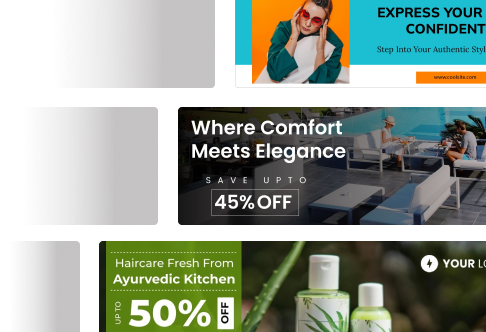
Why Static and Dynamic Banner Ads Are a Powerful Duo:
Static ads can act as the initial hook, capturing first-time buyers’ attention and giving them a glimpse of your brand. Once there’s enough brand awareness, dynamic banners can take over.
You can strategically use them to retarget interested users and present them with personalized offers. This ensures a seamless user journey—from brand awareness to conversion—resulting in increased revenues. It’s a win-win situation!
Wrapping Up
Static vs. dynamic banner ads—picking one is difficult because both are equally effective. Having an open mind is essential since your choice directly impacts your business’s bottom line. With this blog, we have tried to give you a neutral outlook to help you make the best choice.
Understand the requirements of your ad campaign and the type of content that will benefit your company’s CTR.
Brands like Predis.ai help you make beautiful banner ads that attract more audiences and improve CTR with well-designed banner image templates. Want to explore more exciting features?
Sign up for free to enhance your marketing efforts with aesthetic graphics.


